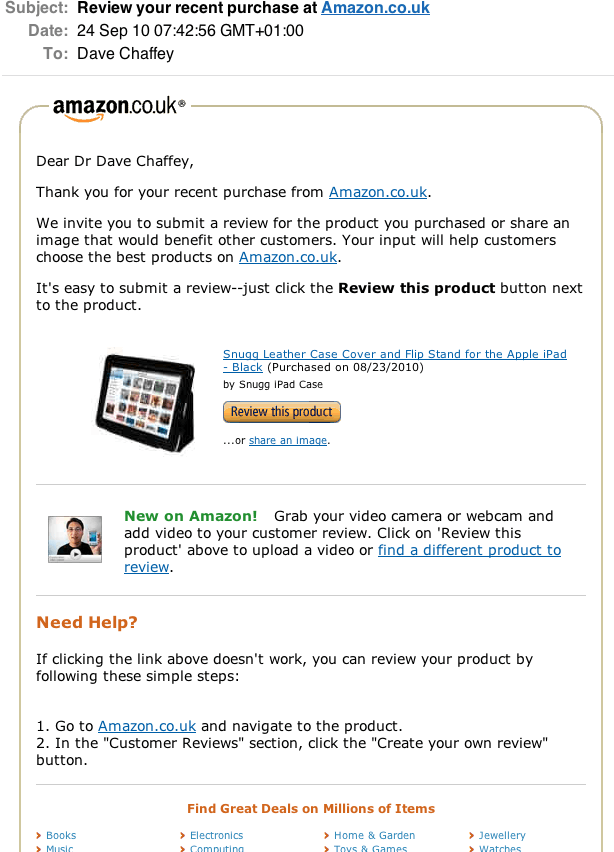A whitepaper on good practice
Value: [rating=4]
Our commentary : Best practice for Enewsletters and promotional emails are discussed a lot; See, for example, our posts on Enewsletter Best Practice.
But how to make the most of emails accompany sales and service transactions are covered less often, eventhough these are important by volume and context - they probably get more attention from recipients than other types of emails (75% are opened according to the report)

This whitepaper by Sally Lowery of ESP Bronto does a fine job of summarising the issues to be reviewed.
Marketing implications : It's important to remember the main aim of transactional emails is as a service email, but there other opportunities for brand-building and increasing awareness about available product categories. It's also worth noting that from a data protection point of view service emails are classed differently.
Good practice is summarised as:
- 1. Remember the primary purpose which is to inform about the transaction.
- 2. Subject lines should be focused on the transaction: product confirmation
- 3. Give clarity on return and cancellation policies. Don't obfuscate (silly word)!
- 4. Set expectations for future communications such as welcome emails, enewsletters and shipping confirmation.
- 5. Nuture customer relationships and encourage recommendations in future
- 6. Use header link navigation to show range of products
- 7. Use dynamic, customised content to speak about reaward programmes and warranties
The Amazon example i've included includes many of these features.
Recommended link: Download Transactional Email PDF (Registration required)







